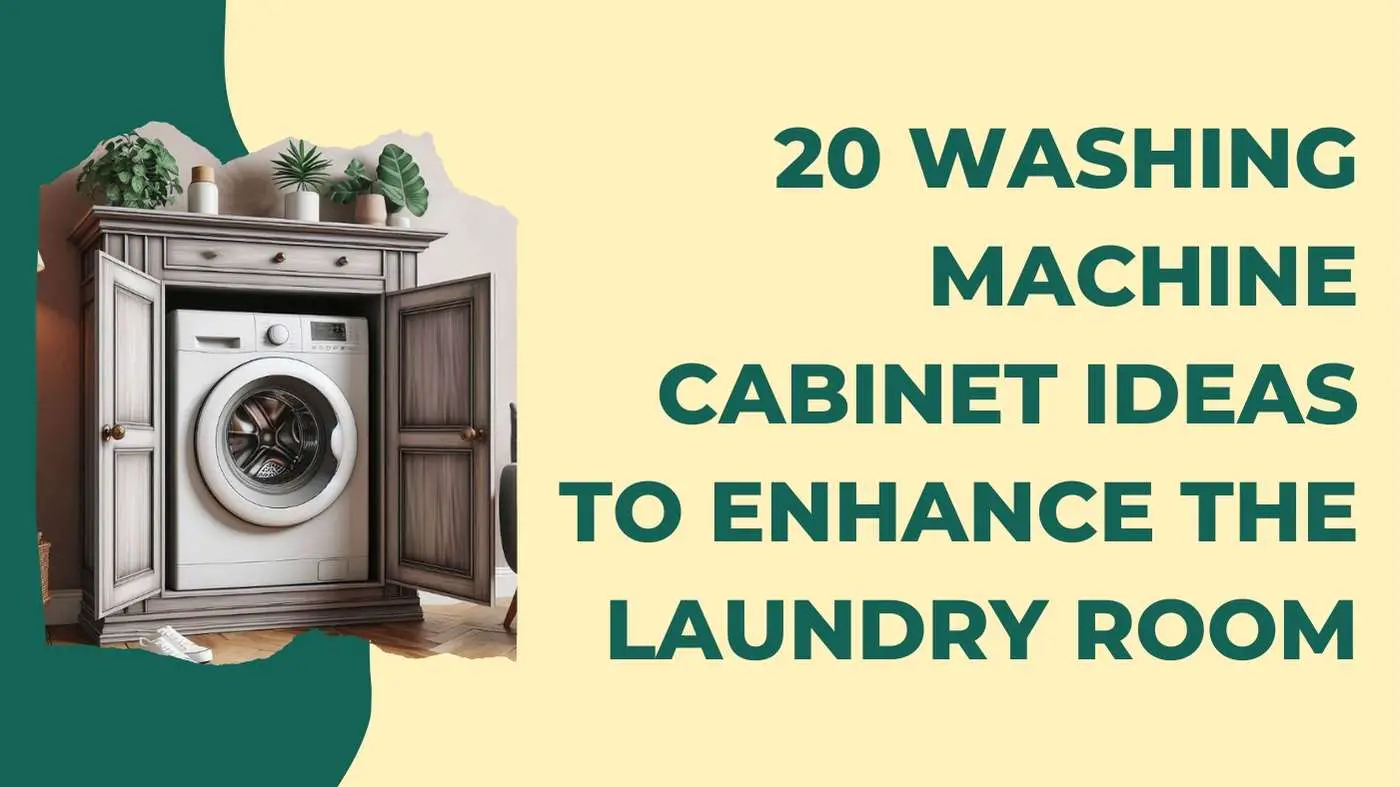When searching for new washer and dryer options, it’s crucial to grasp the various hookup types at your disposal.
This understanding will assist you in selecting the most fitting appliances for your household.
Not all washer and dryer hookups are the same. The hookup requirements may vary depending on the brand and model of the washer and dryer, as well as the location where you are planning to hook up the washer and dryer.
Some washers and dryers require specific electrical outlets, plumbing connections, and venting systems.
So, it’s crucial to review the features of the washer and dryer before the installation to make sure your house can accommodate the hookup requirements.
Also, when it comes to power supply, most washing machines and dryers require 120V to 240V sockets, depending on their maximum power consumption level.
Other important factors that can influence the setup include the water inlet and drain systems in a washing machine; likewise, most dryers require the installation of a vent system.
Note: Gas dryers will require an additional hookup for the gas supply.
Key Takeaways
- The hookup for electrical supply can range from 120v to 240v. (This varies from brand to brand).
- The hookups for the washer and dryer will vary slightly, depending on the brand and type of washer.
- Some washing machines only require a cold water supply, whereas others will require separate hookups for cold and hot water supplies.
- Dryer hookups will also vary depending on their type as the ventless dryer will not require the installation of a vent system; whereas a vented dryer will need to be connected to a vent that exhausts outside.
- The place of hook-up, ease of access to electrical sockets, drainage area, water inlet, venting system, and power cord type will influence the overall setup.
Let us discuss the factors that influence the hookups for washers and dryers below.
Factors that you should consider before hooking up the washer
Power
Most washing machines require a 120v electrical circuit and a 3-prong (power cord) grounded outlet.
However, some washing machines with larger capacities will require a 240v electrical circuit and 4-prong grounded outlets.
Additionally, some washing machines have a built-in heater to heat the water, so the requirements vary.
Make sure to refer to the user manual of your washing machine model to determine and install the proper electrical outlet.
Also Read: How to calculate washing machine power consumption?
Water Inlet
Washing machines will always require a hookup for the water supply and at least one line for cold water.
Additionally, some washing machine models need dual supply lines for hot and cold water separately.
That being said, some modern-day washing machines even have a built-in water heater and do not need a separate line for a hot water supply.
So, depending on the washer model and the location where you want to install the washer or washer and dryer combo, you will need to have the supply lines installed by a professional plumber.
If you already have a water tap installed in your laundry room or near the space selected for the washing machine, you simply need to connect the water inlet hose.
Drain pipe
The drain system is another important thing to consider before you hook up your washing machine.
It plays a key role in discharging used water after completing the washing process.
The drainage system should be checked to ensure it can handle the amount of water being discharged, and that the drain pipe is not bent or kinked.
The standard or average length of the washing machine’s drain hose is around 5 feet long and can be extended up to a maximum of another 5 feet, making it a 10-foot-long drain hose.
Note: Extension of the drain hose beyond the maximum or allowed length can lead to poor drainage or even flooding.
Factors that you should consider before hooking up the dryer
Power
Some gas dryers require a 120v electrical circuit and a 3-prong grounded outlet, and some may require a 240v electrical circuit and 4-prong grounded outlets.
Electric dryers use electrical power to generate heat; hence, the requirements of electrical circuit outlets and the number of prongs required for operation vary.
So, before installing the dryer, it is important to check with a professional electrician to ensure that the electrical wiring and outlets in your home can support the dryer’s electrical requirements.
Additionally, it is essential to confirm if the dryer requires a three- or four-prong outlet to prevent any electrical hazards or damage to the machine.
Vent
There are typically two types of dryers, i.e., ventless and vented dryers.
Ventless dryers will not require any additional hookups to discharge hot air out of your home.
These dryers usually use a condensing system to remove moisture from damp clothes.
Vented dryers will need the installation of an exhaust vent to discharge hot air.
Gas supply
Usually, gas dryers use natural or propane gas to generate heat and dry your clothes.
These dryer models require an additional hookup for gas supplies, such as supply lines and shut-off valves.
It means gas dryers typically require a gas hookup and a vent to safely release the hot air from the exhaust.
Drain (Ventless dryers)
Some dryer models are ventless and do not require any exhaust vent installation.
But some ventless dryers may require a drain connection to expel the condensed water.
If your dryer model has a built-in tank to collect water, then you may not need to install a drain pipe separately.
However, make sure to empty the tank manually as required or after every dry cycle.
Combo units
Combo or all-in-one machines include a washer and dryer in a single unit.
These types of units are usually ventless in most cases.
The electrical circuit requirement can vary from 120v to 240v, likewise, a 3-prong or 4-prong grounded outlet is a must (depending on the appliance’s power consumption).
And of course, drain installation is also required for combo units to discharge used water after every wash cycle.
Common types of washer and dryer Hookups that you can try
There are different types of washer and dryer hookups that you can choose based on your preferences, the dimension of the laundry room, and the type of appliance.
That being said, here are some common and successful types of setups that you can try to ease your laundry tasks.
Side-by-Side Hookups
Side-by-side hookups are the most common type of setup, and they are usually designed for traditional washing machines and dryers that are placed side by side.
The hot and cold water valves, as well as the drain, are typically located behind the machines.
Stackable Hookups
Stackable hookups are designed for compact washing machines and dryers that can be stacked on top of each other.
Just like the side-by-side setup, the hot and cold water valves, and the drain are located at the back of the machines.
Combination Hookups
Combination hookups are designed for all-in-one washer and dryer units.
These units are becoming more popular because they are compact and take up less space.
Furthermore, the combination hookups have one water valve and one drain that connect to the unit, thus making it a space-saving option.
Pedestal washer and dryer
A pedestal washer and dryer is a newer option that involves placing the washing machine and dryer on a pedestal.
This can provide extra storage space underneath the machines and can also make them easier to access.
How to connect a washer and dryer?
You can connect a washing machine and dryer by following these simple steps:
Step 1: Identify the installation requirement of the appliance
The installation prerequisites of your washer and dryer can significantly impact the overall installation and setup.
Depending on the brand and type of the washer or dryer, the prerequisites for their installation may vary significantly.
For instance, certain washers and dryers require a precise type of electrical socket, specifically a 240-volt socket, to function.
On the other hand, others may necessitate a particular amount of clearance space surrounding the machines to ensure adequate ventilation or to enable proper access during installation and maintenance.
Furthermore, the flooring and plumbing in your laundry room can also impact the installation process.
For instance, some washers require a floor that can support their weight, while others may mandate a specific type of plumbing hookup.
If you’re unsure regarding the installation prerequisites for your particular washer and dryer, consult the manufacturer or seek the guidance of an expert.
Step 2: Locate the Hookups
Locate the hot and cold water valves, as well as the drain, in your laundry room to ensure proper installation.
If there is no pre-existing water supply line in the desired location, the services of a qualified plumber may be necessary to have one installed.
Alternatively, selecting a different location where a water supply line is already available, such as a bathroom or an existing laundry room, might be a viable option.
It is critical to have a dependable and steady water source to fulfill your washing requirements
Note: Not all washers will require both hot and cold water supplies; check the user manual for more details.
Step 3: Connect the Water Hoses
Attach the hot and cold water hoses to the corresponding valves on the back of the washing machine.
Also, make sure that the connections are tight enough to prevent leaks.
Step 4: Connect the Drain Hose
The next step is to attach the drain hose to the drain in the wall or floor.
While attaching the drain hose, make sure that the hose is secured properly, as failing to do so may result in leakage.
Step 5: Hook up the dryer
Hooking up a dryer can vary depending on the type of dryer and whether it is a standalone unit or part of a combo washer and dryer.
Here are some general steps to follow for vented, non-vented, and combo dryer units:
Vented dryer hookup
First, locate the dryer vent outlet on the back of the dryer and attach the vent hose to it.
Run the other end of the vent hose to the outside of your home, making sure to secure it in place and create a seal around the outlet.
Plug the dryer into an electrical outlet that can handle its voltage requirements.
Non-vented dryer hookup
Non-vented dryers are often referred to as “ventless” dryers and do not require a vent hose. Instead, they use a condenser to remove moisture from the air and send it to a holding tank or drain.
Place the dryer in a well-ventilated area to prevent moisture buildup.
Follow the manufacturer’s instructions to connect the dryer to a drain or holding tank for the collected moisture.
Next, plug the dryer’s power cord into an electrical outlet that can handle its voltage requirements.
Combo washer and dryer hookup
Combo washer and dryer units typically have one hookup for both the washer and dryer functions.
First, locate the hookup on the back of the unit and connect the vent hose (if required) to the dryer vent outlet.
Run the other end of the vent hose to the outside of your home, making sure to secure it in place and create a seal around the outlet.
Connect the unit to a water supply using the provided hoses, followed by connecting it to a power source that is capable of meeting the power requirements.
Note: It’s important to note that these are general steps and that specific hookup requirements can vary depending on the manufacturer and model of your dryer.
Also Read: Gas Dryers vs Electric Dryers (Differences Explained)
Step 6: Test the Connections
Turn on the water valves and run the washing machine and dryer to test the connections.
Look for any leaks or issues with the water flow.
Final Thoughts
Even though many washers and dryers share the same basic structure, each has its own unique set of required connections, i.e., the inlet hoses, the drain hoses, and the power cord prongs may vary from brand to brand.
Also, the required power supply and voltage may differ depending on the model and country of origin.
It is important to carefully read the manufacturer’s instructions and follow them to ensure the safe and proper installation of your washer and dryer.
To obtain the proper circuit board requirements, simply refer to the user manual of your washing machine model.
Lastly, do not extend the drain pipe or the venting system above the maximum or allowable length as per your machine’s model.
In case of any confusion, it is best to contact an appliance service professional for help during the installation of your washer or dryer.
Frequently Asked Questions
Can washers and dryers be hooked up anywhere?
Technically, you can place your washer and dryer anywhere you want. However, you would want it to be placed in an area that has proper drainage, water supply, ventilation, and power supply facilities. If your dryer is a vented dryer, then you will need to install a venting exhaust so that the hot air and moisture can be released outside of your home.
Does installing a washer and dryer cost a lot?
In general, you can expect to pay anywhere between $300 and $600 for an average setup. However, the cost may go up if the installation requires any special prerequisites like additional electrical work or structural modifications.
It is possible to plug both a washer and a dryer into the same outlet?
Washing machines and dryers have different power needs depending on the brand, model, and size of the machine. The power outlet you’re using should also be able to meet the electrical requirements of both appliances. As long as the power outlet can handle the electrical demands of the washing machine and dryer, you can have peace of mind that they will operate safely and efficiently. It is recommended to consult an electrician to ensure that the power outlet is sufficient for both appliances.
You May Also Like
- Hook up a portable washer to the sink in 10 easy steps
- Can you install a washing machine in a caravan?
- How to Install Waste Pipe for Washing Machine? (Step-by-Step)
- How to Install a Washing Machine Drain Pan?
- What is a Hall Sensor in a Washing Machine? (Explained)
- Portable Washing Machine: Can It Use Regular Hookups?





